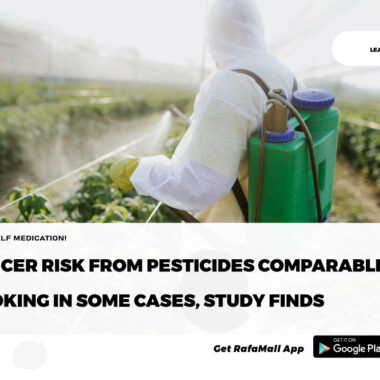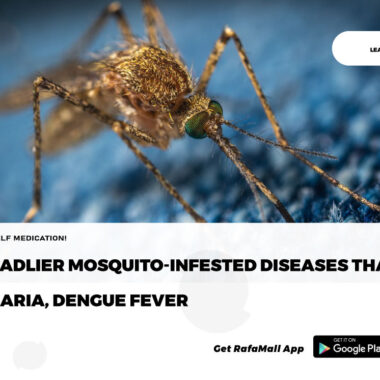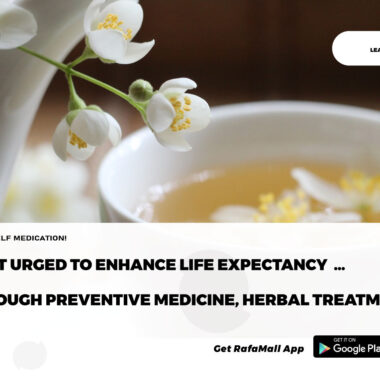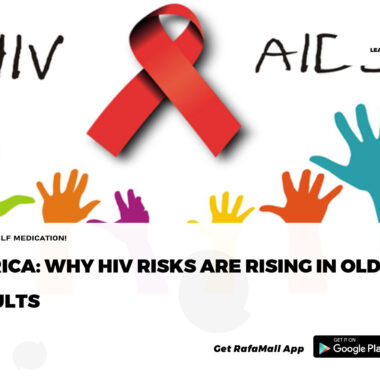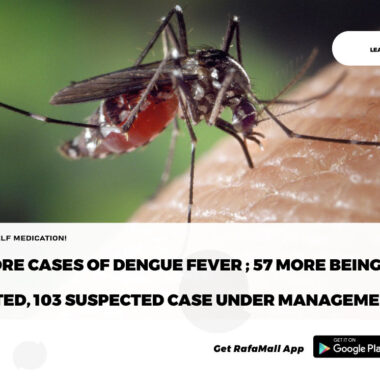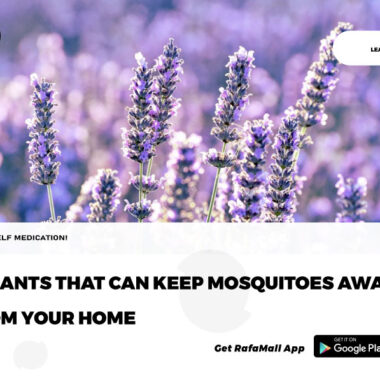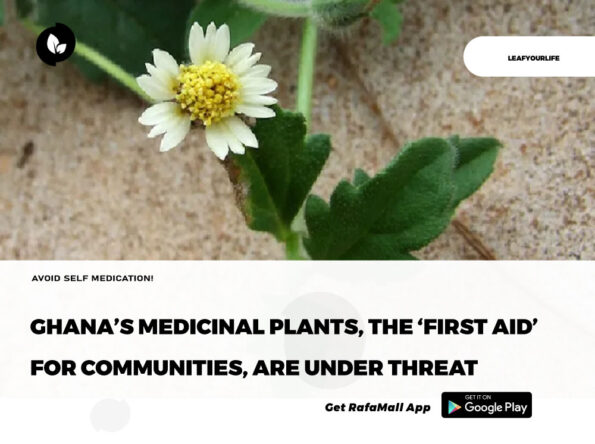
- Forest communities in southwestern Ghana use 70 species of medicinal trees to treat up to 83 ailments, according to a recent study.
- These plants contain high levels of bioactive compounds with pharmacological benefits, but many are also threatened by factors including overharvesting and agricultural expansion in the area that drives large-scale deforestation.
- Due to a lack of access to Western medicine and cultural perceptions, traditional medicine is the primary source of treatment for many forest-fringe communities.
- The authors say government-led conservation programs and preserving traditional knowledge is important to conserving these medicinal tree species.
Rural communities in southwestern Ghana lacking access to conventional medicine are using dozens of medicinal tree species to treat up to 83 ailments, according to a new study. However, many of these tree species are also threatened by factors including overharvesting and agricultural expansion that drives deforestation in the area, the study authors say.
The study, published in the journal Heliyon, found that the communities on the fringes of the Asukese Forest Reserve and Amama Shelterbelt Forest Reserve use 70 species of medicinal trees from 33 taxonomic families. The top five pharmacological effects they attribute to these trees are anti-inflammatory, anti-malarial, anti-microbial, anti-bacterial, and reproductive boosting properties.
“Herbal medicine is like the ‘first aid’ of rural communities and the only aid in some remote areas,” study co-author Michael Asigbaase, a lecturer in the Department of Forest Sciences at Ghana’s University of Energy and Natural Resources. “There are herbalists in all communities. In fact, in some cases, they have been able to help people who could not find help via clinics and hospitals.”
The study authors interviewed 88 respondents from four communities, including the Indigenous Akan-Bono people and northern tribes like the Kusaasi and Waala to understand their use of medicinal trees in the region. The findings were evaluated using five parameters, including an Indigenous knowledge index that assessed community knowledge of plant properties, healing effects, varieties and side effects. The rest of the parameters looked at how often medicinal properties were cited in scientific literature, the species and plants’ part value, and their use within families.
For remote local communities in Ghana, medicinal trees are the primary source of treatment, given that they’re easily accessible to communities living on the fringes of forests. Despite recent advances in Western conventional medicine, the dependence on traditional medicine in many countries in Africa is due to the relatively high cost of the former, limited health service coverage and number of health professionals, and the cultural normalization of traditional medicine.
“Many communities in Ghana perceive herbal medicines to be more effective than orthodox [Western] medicine because they are available, affordable, and there is shared knowledge on how to prepare and administer them,” Asigbaase told Mongabay. Traditional healers in Ghana provide an estimated 70% of health care using diverse medicinal species. Ghanaian tribes as a result collected traditional medicine knowledge of a combined 1,360 species of medicinal plants for their primary health care needs.
According to the study, participants who were widowed had more knowledge of medicinal plants compared to respondents who were married or single. This was because they have a large number of dependents or have experienced the loss of a spouse, the authors say, which is associated with limited income or access to resources for Western medicine.
Azadirachta indica, commonly known as the neem tree, was the most frequently cited medicinal tree species.
“Plant species of the Fabaceae, Apocynaceae, Arecaceae [families] and their closely related families have generally been reported to contain high levels of bioactive compounds with pharmacological value,” Asigbaase said.
“Consistent with our findings, some studies have reported ethnobotanical knowledge on the use of various trees for the treatment of human, plant, and animal diseases.”

A treatment at risk
Despite their widely acknowledged medicinal value, these trees are also used by community members for other purposes. These include making charcoal for fuel and as timber for construction and carpentry — uses that pose a threat to the conservation of the tree species. Wider threats like agricultural expansion, logging, mining, urbanization and climate change also contribute to the loss of medicinal tree species through deforestation, the study noted.
According to the United Nations Development Programme, the current deforestation and forest degradation rate in Ghana is 135,000 hectares (333,600 acres) every year. Another study by Asigbaase and several colleagues involved in the Heliyon paper, and also conducted near the Asukese and Amama forest reserves, shows that seven of the cited medicinal plant species are vulnerable to extinction.
Overharvesting of these plants, which are primarily sourced from the wild, is among the top drivers of the loss of medicinal plants in the study area. According to the perception of residents interviewed for that study, medicinal plants will become locally extinct in a decade.
The loss of these species means the erasure of their traditional knowledge, spirituality, and history, say researchers of another study on Ghana’s ethnobotanical traditions. According to Bismark Ofosu-Bamfo, a lecturer in ecology at the University of Energy and Natural Resources, there are strong ties between the trees and culture in most tribes across Ghana.
“Some names of towns like Odumase may literally [mean] ‘under the Odum tree’ [Milicia excelsa]. A name like Onyina, which is a surname and also an appellation for a male born on Thursday [Yaw Onyina], is the same as the local name for Ceiba pentandra,” he said.


Ofosu-Bamfo said sustainable harvesting of herbal medicine is a key challenge as the demand for trees, like the bark of Khaya species, also known as African mahogany, is high, mainly from producers of herbal bitters. The demand for plants like Khaya grandifoliola, studied for the treatment of gastric ulcers, sometimes leads to felling and debarking of whole trees.
“Conservation commitment from users of herbal medicine at a local to industrial scale is needed,” Ofosu-Bamfo said. “Alternatives to trees may exist in closely related woody climbers [like lianas], some of which are in the same families as the trees used for the same medical conditions.”
In 1975, the government established the Centre for Scientific Research into Plant Medicine (CSRPM), later renamed the Centre for Plant Medicine Research (CPMR). According to Asigbaase and colleagues, the government realizes the importance of traditional medicine in Ghanaian society.
“The activities of the CPMR and other scientific studies confirming the efficacy of such herbal remedies have further promoted and increased the usage of herbal medicines in Ghana,” their study says.
One way in which communities in the study area are trying to conserve medicinal trees is through government-led forest restoration and protection programs that target frequent forest fires in the region. The impacts of these programs are yet to be evaluated.
“Local communities play a critical role in initial firefighting and assist in early detection, boundary clearing to contain the fire, and the planting of trees,” Asigbaase said.
“The communities also participate in the Modified Taungya System [MTS], which is an innovative forest restoration tool. It is an agroforestry system where participants are given portions of degraded forest lands to cultivate crops until the canopy of the trees closes.”
Contrary to the findings of similar studies that show traditional plant knowledge diminishing across generations, the authors found similar levels of ethnobotanical knowledge across different ages, genders, religions and educational levels. This suggests an effective transfer of knowledge among individuals in local communities, which can play a role in the conservation of species.
“This transfer of ethnobotanical knowledge has been possible through parental training and community knowledge sharing via word-of-mouth recommendations,” Asigbaase said.
“There is a saying among the local communities that can be translated as, ‘If you are sick, you should not keep quiet,’” he added. “Thus, community [members] explore solutions to their health problems by sharing their accumulated ethnobotanical knowledge.”
Banner image: Azadirachta indica, commonly known as the neem tree, was the most frequently cited medicinal tree species. Image by Thamizhpparithi Maari via Wikimedia Commons (CC BY-SA 4.0).
Citations:
Asigbaase, M., Adusu, D., Musah, A. A., Anaba, L., Nsor, C. A., Abugre, S., & Derkyi, M. (2024). Ethnobotanical and ethnopharmacological survey of medicinal tree species used in the treatment of diseases by forest-fringe communities of Southwestern Ghana. Heliyon, 10(1), e23645. doi:10.1016/j.heliyon.2023.e23645
Nguta, J. M., Appiah-Opong, R., Nyarko, A. K., Yeboah-Manu, D., & Addo, P. G. (2015). Medicinal plants used to treat TB in Ghana. International Journal of Mycobacteriology, 4(2), 116-123. doi:10.1016/j.ijmyco.2015.02.003
Wodah, D., & Asase, A. (2012). Ethnopharmacological use of plants by Sisala traditional healers in northwest Ghana. Pharmaceutical Biology, 50(7), 807-815. doi:10.3109/13880209.2011.633920
Asigbaase, M., Adusu, D., Anaba, L., Abugre, S., Kang-Milung, S., Acheamfour, S. A., … Ackah, D. K. (2023). Conservation and economic benefits of medicinal plants: Insights from forest-fringe communities of Southwestern Ghana. Trees, Forests and People, 14, 100462. doi:10.1016/j.tfp.2023.100462
Soelberg, J., Asase, A., Akwetey, G., & Jäger, A. K. (2015). Historical versus contemporary medicinal plant uses in Ghana. Journal of Ethnopharmacology, 160, 109-132. doi:10.1016/j.jep.2014.11.036
Njikam, R. N., & Njikam, N. (2006). Curative dose ofKhaya grandifoliola. Stem bark for the treatment of gastric ulcers using Wistar rats. Pharmaceutical Biology, 44(2), 152-155. doi:10.1080/13880200600596336

